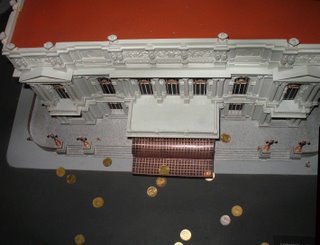A Morning at the Opera
 Just this week, we mentioned to one of our housemates that we were interested in seeing the Teatro Colón, a world-famous opera house built in 1908. Much to our surprise, we were informed that it would be closing its doors on November 2nd for an extensive restoration. Not wanting to miss our chance, we woke up at the brutally early hour of 9:00 to take a tour. Upon arriving, we discovered that there were two tours––one in English and one in Spanish. And although the line for the Spanish-language tour was nearly three times as long, the tour in English was sold-out. Perplexed, we decided to join the Spanish language tour.
Just this week, we mentioned to one of our housemates that we were interested in seeing the Teatro Colón, a world-famous opera house built in 1908. Much to our surprise, we were informed that it would be closing its doors on November 2nd for an extensive restoration. Not wanting to miss our chance, we woke up at the brutally early hour of 9:00 to take a tour. Upon arriving, we discovered that there were two tours––one in English and one in Spanish. And although the line for the Spanish-language tour was nearly three times as long, the tour in English was sold-out. Perplexed, we decided to join the Spanish language tour.At first I was concerned about missing crucial information from our tour guide, but everything turned out okay. This was mostly because the facts delivered on the tour of the Teatro Colón closely resemble the facts delivered on tours of theatres around the world. The acoustics are perfect, the best box is saved for the President, the marble comes all the way from Europe, etc. It was kind of a relief. But, lest I seem jaded, the theatre was actually really beautiful. And we were made privy to a lot of the behind-the-scenes workings, such as the room where a hundred anorexic ballerinas prepare for the show, the place where they store all 22,000 pairs of shoes, and––my favorite room of all––the set design workshop, where a tiny Argentine man was furiously sanding down an enormous styrofoam effigy of an ancient Chinese warlord.
I know what you’re thinking: why would you post this lame picture when you got to see a tiny Argentine man furiously sanding down an enormous styrofoam effigy of an ancient Chinese warlord? Well, my friends, I'll tell you. There are no photographs allowed at the Teatro Colón. In fact, the only place you’re allowed to take photos is in the lobby, where’s there’s really not much to look at. Of course, everyone feels obligated to take a million photos of the lobby anyway, and so did I. I snapped one of this miniature artist’s rendering of the theatre. There was a hole in its plexiglass case, which people have been using to drop their spare centavos––maybe for suerte? I guess miniature artist’s renderings of famous theatres are like the Argentine equivalent of shopping mall fountains. Or something. –NSH

0 Comments:
Post a Comment
<< Home